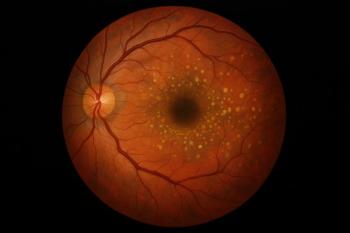
Hormone Replacement Therapy May Benefit Some Women with Pulmonary Hypertension
Preliminary data suggest people with Group 1 pulmonary hypertension had improved outcomes if they had ever received hormone replacement therapy.
New evidence suggests the use of hormone replacement therapy (HRT) may lead to benefits in certain women with
During a
Corresponding author Audriana Hurbon, M.D., of the University of Arizona College of Medicine, explained along with colleagues that previous research has indicated women with World Symposium Group 1 pulmonary hypertension have improved preservation of RV function compared to men in the same disease group. Yet, Hurbon and colleagues said it was not clear whether the preservation of RV function was linked with endogenous and/or exogenous exposure to female hormones, and it was not known if the apparent benefits of female hormones applied to all groups of pulmonary hypertension or merely to Group 1.
“While it is accepted that in World Symposium Group 1 pulmonary hypertension female sex is associated with preservation of right ventricular function, the role of estrogen in pulmonary hypertension has been controversial,” Hurbon explained, in a press release. “Additionally, we know that women are affected by pulmonary hypertension more often than men, but when compared to each other, women seem to present less severely than men.”
The more than 700 participants in Hurbon’s research were part of the National Heart Lung and Blood Institute-funded Pulmonary Vascular Disease Phenomics (PVDOMICS) Study. The women represented all five World Symposium disease groups, along with healthy controls and comparators who had risk factors for pulmonary hypertension but had not been diagnosed with the disease.
The authors set out to compare participants using mean pulmonary artery pressure on right heart catheterization to measure pulmonary vascular disease related to pulmonary hypertension, and characterizing RV function based on RV fractional shortening and RV ejection fraction from echocardiography.
Endogenous hormone exposure was quantified based on self-reported lifetime duration of menses. Participants were considered to have exogenous exposure to hormones if they had ever received HRT.
Hurbon and colleagues found that people with greater lifetime duration of menses had decreased average pulmonary arterial pressure regardless of which pulmonary hypertension group they belonged in. Specifically, they found mean pulmonary arterial pressure was 47±14 mmHg for participants with 20-30 years of menses, versus 37±13 mmHg for participants with more than 50 years of menses.
Additionally, participants who had taken HRT had lower mean pulmonary artery pressure (35±11 vs 42±14, P = 0.002) and pulmonary vascular resistance (5±3 vs 7±4, P = 0.006) and higher RV fractional shortening (37±11 vs 32±9, P = 0.001) and RV ejection fraction (48±13 vs 40±12 %, P < 0.0001). However, when broken out by subgroup, the investigators only found statistically significant impacts in patients with Group 1 pulmonary hypertension.
Hurbon said in the press release that further analysis also suggests that older age and HRT exposure may have a positive “synergistic effect.”
“This could support a theory suggesting a threshold of estrogen exposure necessary for a protective effect,” she said.
The authors described their findings as preliminary, but they said their data suggest more research is needed to better understand the potential impacts of HRT, both positive and potentially negative, on patients with pulmonary hypertension.
“We hope this study will be a catalyst for further exploration of the mechanisms of female reproductive hormones to identify therapeutic targets for right ventricular preservation in pulmonary hypertension,” Hurbon said.
Newsletter
Get the latest industry news, event updates, and more from Managed healthcare Executive.




















































